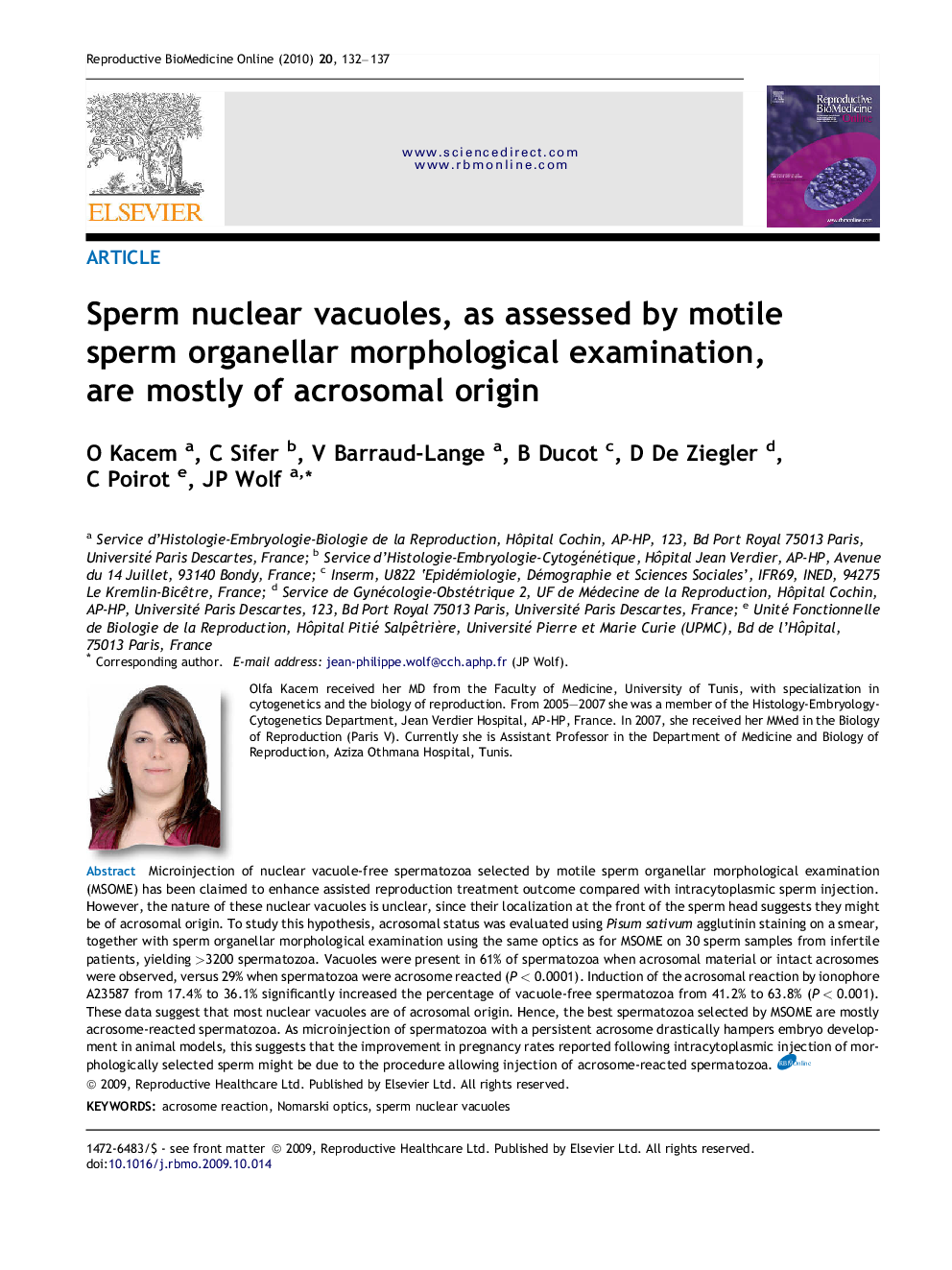| کد مقاله | کد نشریه | سال انتشار | مقاله انگلیسی | نسخه تمام متن |
|---|---|---|---|---|
| 3971919 | 1256784 | 2010 | 6 صفحه PDF | دانلود رایگان |

Microinjection of nuclear vacuole-free spermatozoa selected by motile sperm organellar morphological examination (MSOME) has been claimed to enhance assisted reproduction treatment outcome compared with intracytoplasmic sperm injection. However, the nature of these nuclear vacuoles is unclear, since their localization at the front of the sperm head suggests they might be of acrosomal origin. To study this hypothesis, acrosomal status was evaluated using Pisum sativum agglutinin staining on a smear, together with sperm organellar morphological examination using the same optics as for MSOME on 30 sperm samples from infertile patients, yielding >3200 spermatozoa. Vacuoles were present in 61% of spermatozoa when acrosomal material or intact acrosomes were observed, versus 29% when spermatozoa were acrosome reacted (P < 0.0001). Induction of the acrosomal reaction by ionophore A23587 from 17.4% to 36.1% significantly increased the percentage of vacuole-free spermatozoa from 41.2% to 63.8% (P < 0.001). These data suggest that most nuclear vacuoles are of acrosomal origin. Hence, the best spermatozoa selected by MSOME are mostly acrosome-reacted spermatozoa. As microinjection of spermatozoa with a persistent acrosome drastically hampers embryo development in animal models, this suggests that the improvement in pregnancy rates reported following intracytoplasmic injection of morphologically selected sperm might be due to the procedure allowing injection of acrosome-reacted spermatozoa.
Journal: Reproductive BioMedicine Online - Volume 20, Issue 1, January 2010, Pages 132–137